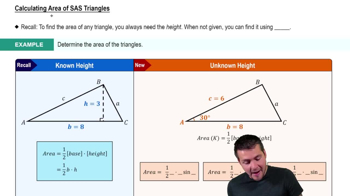Textbook Question
In Exercises 1–8, solve each triangle. Round lengths of sides to the nearest tenth and angle measures to the nearest degree.
298
views
 Verified step by step guidance
Verified step by step guidance Verified video answer for a similar problem:
Verified video answer for a similar problem:



 4:27m
4:27mMaster Intro to Law of Sines with a bite sized video explanation from Patrick
Start learning